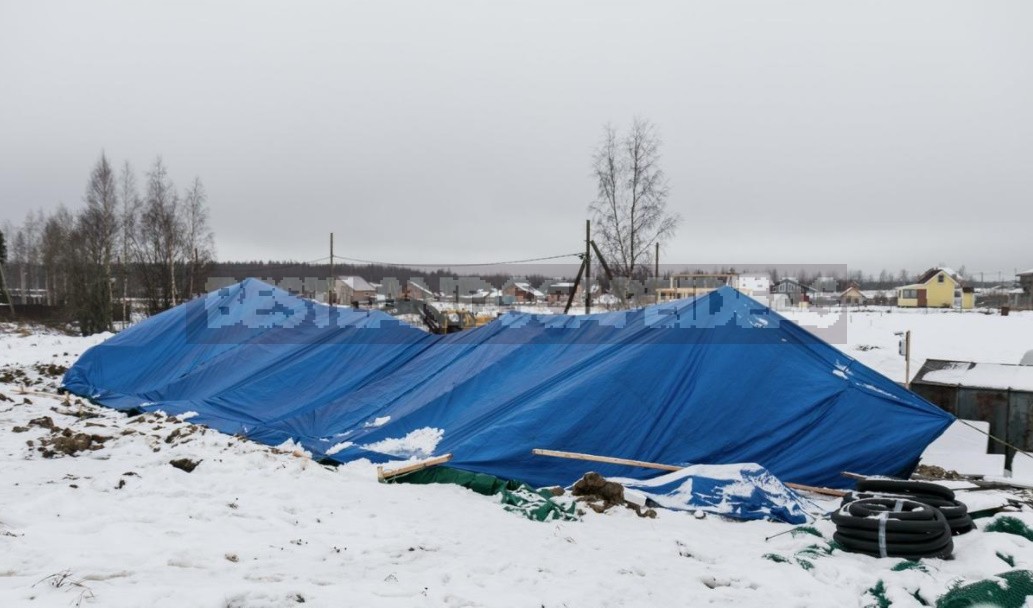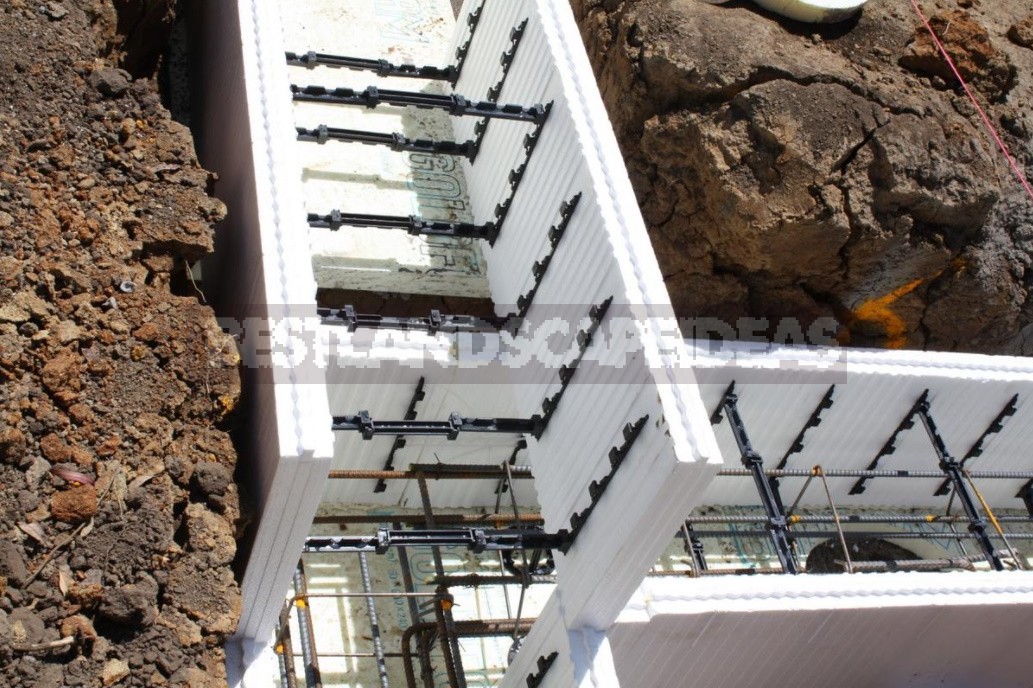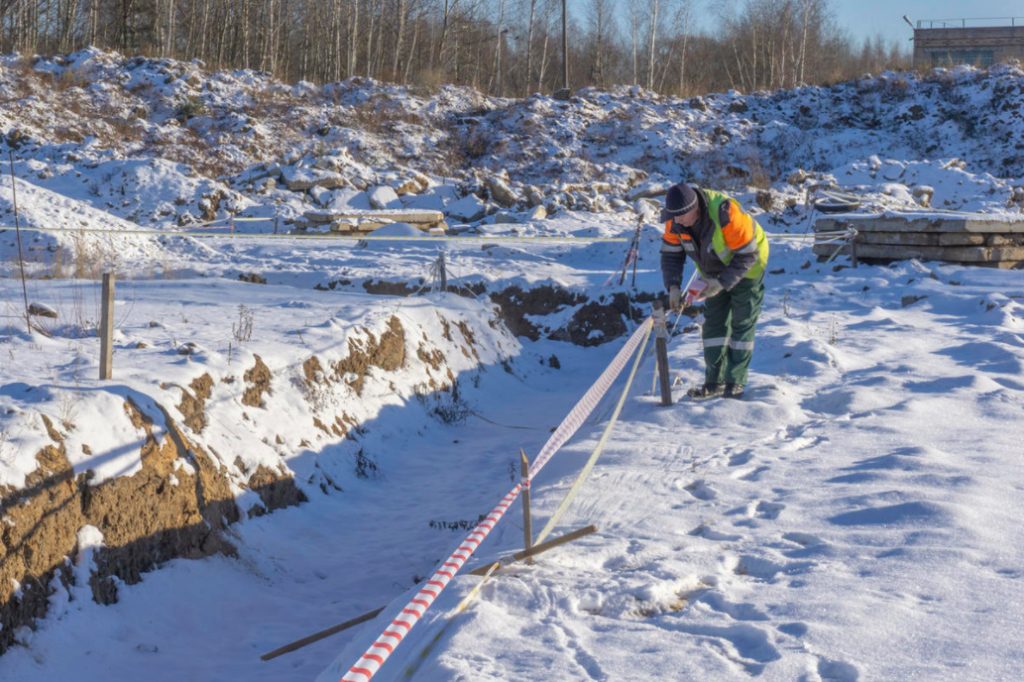You can build a foundation not only in summer — but also in winter, although it is more difficult than in the warm season. To create a reliable, strong tape foundation in such conditions, simple but effective methods will help. In the construction of “winter” monolithic foundations, the developer’s difficulties are usually associated with earthworks, the concreting process, and the aging of concrete. All these tasks need to be solved in stages.
Sand pad for tape foundation
The preparation of the trench with the help of sand filling is of particular importance during construction in winter. At subzero temperatures, clay and loamy soils begin to move and rise. In the spring or during the thaw, they gradually return to their place. A properly arranged sand cushion acts as a shock absorber, which stabilizes the foundation and does not allow the heaving soil to strongly affect it.
The thickness of the leveling layer depends on the depth of the support structure. For foundations buried at the level of freezing (1.5-3 m), it is recommended to make the backfill no thicker than 0.15 m. For shallow supports — 0.15-0.5 m. It is important to understand that such a pillow should be not only under the sole of the foundation, but also on each side of it. The fulfillment of this condition will help to resist the lateral tangential forces of heaving.
If you use sand you need to make sure that it is dry. If there is snow and ice in it, then after it warms up, they will turn into water. This will lead to the appearance of cavities, due to which the soil (and then the foundation) can settle. To prevent the pillow from freezing as long as possible, it should be poured with hot salted water. But this should be done only in the places of ramming, using a watering can. It is advisable to seal in small layers (5-7 cm each).
As a result of all the described works, the sand cushion will lie flat and dense, ready to take on all the loads of the moving soil.
Preparation and insulation of concrete
At temperatures below zero, concrete gains strength 5 times slower than in summer. The explanation is simple: the moisture in the material freezes before it can react with the cement. This means that it is not able to harden properly, which in the future is fraught with the destruction of the foundation. In addition, the solution should not be poured into frozen soil, otherwise in the spring, when the ground will thaw, the structure will sag and begin to crack. There are many ways to solve these problems.
One of them is heating the trench with concrete with heat guns. To do this, gas heating devices are placed around its perimeter, which will increase the temperature of the soil and the filling itself for a long time. To prevent heat from dissipating, a frame canopy is built over the monolithic tape, which is completely covered with a tarpaulin or a dense plastic film. If only one gun is used for heating, its power must be at least 30 kW.

The heating of the tent, under which the newly cast foundation is located, allows you to create almost ideal conditions for the complete hardening of the concrete. However, building a shelter and messing with the heat unit is troublesome and costly. A less time-consuming method is to heat the foundation elements with electricity. The technology is not particularly complex.
Special equipment is installed on the construction site.
the transformer station, which is connected to the support armature by means of a cable with electrodes. Next, the transformer is connected to the power grid, after which the reinforcing bars are heated and increase the temperature of the concrete. The recommended voltage is 36 volts. It is clear that the station costs a lot of money, so it is usually rented. And of course, the connection and further control of the equipment should be handled by a professional electrician. If such work is assigned to unskilled workers, there is a high probability that sooner or later one of them will suffer from an electric shock.
Frost-resistant additives-modifiers are very popular when concreting in winter. For example, sodium nitrite or formate. Being part of the concrete mix, they do not allow moisture to freeze, and the foundation can be poured even at very low air temperatures. At the same time, some of the additives are recommended to be used at -5… -10°C, and some-even at -30°C. Indicators of resistance to cold are indicated on the package. Most often, these substances are mixed with cement, previously dissolved in water, but sometimes added to the dry mixture and in the form of powder. Which of the options is better, and in what proportion to make additives, you need to learn from the manufacturer’s instructions. In any case, it should be taken into account that when using modifiers, the amount of water for the solution should be reduced by 15, or even 25%.
The easiest way to add additives is in a concrete mixer. The first step is to fill in (based on the desired proportions) cement, sand and crushed stone, and then turn on the device. Next, dilute the modifier in water (if recommended by the manufacturer), pour it into the device and mix everything again. The resulting finished mixture should be a thick, homogeneous mass.
Thermal insulation of the foundation
The use of frost-resistant additives allows you to start construction in the cold season, but for a high-quality set of strength, the foundation still needs to be insulated. It is not necessary to use expensive equipment in this case-it is enough to cover the concrete tape with a PVC awning. And it is better to disassemble the formwork closer to spring, when the air warms up to plus values.
An interesting method of thermal insulation is pouring concrete into styrofoam blocks. This material accumulates the heat that is released when the solution solidifies and thus maintains the temperature necessary for its curing. A large range of standard sizes allows you to make tape foundations of any configuration. In addition, styrofoam does not absorb moisture, so a serious waterproofing system is not required.
Even not very experienced builders will be able to assemble such a block structure, and quickly and without much effort. The sections are hermetically connected to each other by means of a lock connection, which eliminates the occurrence of cracks. In the corners or curves, put the rotary elements of the corresponding shape. Before pouring the solution, lay the necessary communications and fittings.

The filling technology is the same as when using conventional wooden formwork. The easiest way to feed concrete is from the mixer tray. It is advisable to fill the entire perimeter immediately — and if this is not possible, you can fill it in layers. It should be borne in mind that it is advisable to build a foundation of fixed formwork only when building small wooden houses.


















